Questões de Vestibular
Foram encontradas 69.760 questões
Resolva questões gratuitamente!
Junte-se a mais de 4 milhões de concurseiros!
O proprietário do bar percebeu a possibilidade de aumentar as vendas. No entanto, está disposto a oferecer quantidade adicional de apenas um desses produtos. O espaço ocioso é suficiente para acomodar 400 latas.
Considerando o custo, o valor de venda e o espaço ocupado por cada embalagem, avalie as afirmações a seguir.
I. A embalagem de lata tem um custo menor que a de garrafa em 75%.
II. A embalagem de lata tem margem de contribuição maior que a embalagem de garrafa.
III. A embalagem de garrafa tem uma margem de venda de 50% acima da margem da embalagem de lata, embora o custo de venda seja apenas 33% acima do custo da embalagem de lata.
É correto o que se afirma em
Isso traz alguns problemas para a academia, já que suas concorrentes estão localizadas em espaços mais visíveis, como shoppings, por exemplo. Outro fator é que a prefeitura está construindo um centro de convivência para a terceira idade, onde oferecerá, gratuitamente, além de outros serviços, uma academia. No entanto, após pesquisa, verificou-se que 70% da população local da terceira idade não trocaria uma academia paga por uma gratuita. Com o objetivo de entender e melhorar a estratégia da empresa, seu gestor e a sua equipe de trabalho realizaram uma análise do ambiente interno e do ambiente externo, utilizando, para isso, a matriz SWOT.
Após a análise e o mapeamento de ambiente, o gestor e a sua equipe concluíram que
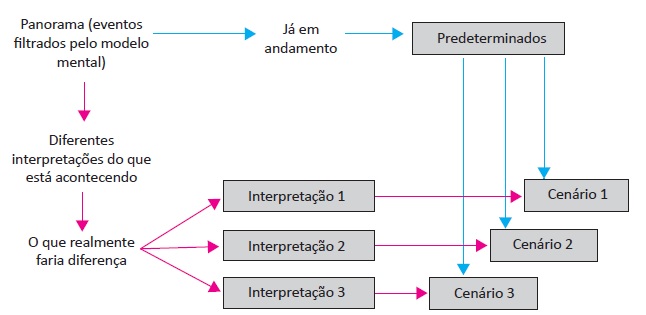
FALLER, L. ALMEIDA, M. I. R. Planejamento por cenários: preparando pequenas empresas do varejo de móveis planejados para um futuro competitivo, 2014 (adaptado).
A partir das informações apresentadas sobre a prospecção e interpretação de cenários, avalie as afirmações a seguir.
I. A construção de cenários é considerada uma ferramenta relevante na identificação e análise de acontecimentos possíveis e importantes dentro dos diferentes setores de atuação dos empreendimentos, dando subsídios aos profissionais para soluções e alternativas consistentes.
II. Com a prospecção e interpretação de cenários, as empresas tornam-se obsoletas e até mesmo perdem seu espaço para empreendimentos maiores e com mais capital, pois, com o que é despendido nas referidas projeções, a empresa deixa de assimilar o que realmente está acontecendo no mercado econômico.
III. Mesmo com a crise deflagrada pela pandemia da Covid-19, houve empresas que conseguiram driblar o cenário negativo do mercado brasileiro mediante algumas estratégias, como a renegociação dos preços com fornecedores, a diversificação dos produtos, os investimentos em marketing, entre outros.
É correto o que se afirma em
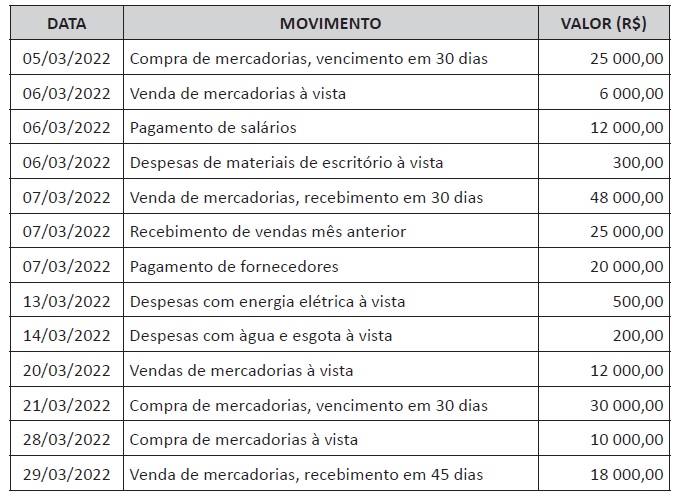
Considerando que a empresa tenha saldo inicial de caixa de R$ 20 000,00, pode-se apurar, ao final do mês de março, um saldo de caixa de
Para conhecer melhor os consumidores e levar a eles o mix de marketing mais adequado, no comércio eletrônico, faz-se uso de
Preço de Venda R$ 50,00 – unidade Custos Variáveis R$ 25,00 – unidade
Devido ao crescimento de mercado, a empresa planeja comercializar seus produtos a R$ 60,00 a unidade com seu custo variável sendo de R$ 32,00. Ela planeja obter lucro líquido de R$ 7 000,00.
Nessa situação, sabendo que os custos fixos não sofrem alterações, o novo ponto de equilíbrio contábil será de
Texto 1
Cotidianamente, as empresas passam por modificações de posicionamento diante do mercado para atender demandas e exigências cada vez maiores. Ocorre que a estrutura das organizações é composta por pessoas, que possuem diferentes características e ambições.
GALVÃO, A. C. Q. Relação entre fatores de clima organizacional e motivação do colaborador no ambiente de trabalho.
In: BEHNKE, M. T. (org.). Gestão de Pessoas: artigos reunidos. Curitiba: InterSaberes, 2014, 69-70 (adaptado).
Texto 2

Disponível em: http://chargesdodenny.blogspot.com/2018/01/. Acesso em 17 jun. 2022.
Com relação a motivação das pessoas, o clima e a cultura organizacional, avalie as afirmações a seguir.
I. As recompensas não financeiras, como transportes, alimentação, assistência médica e oportunidades de crescimento profissional, não influenciam a motivação das pessoas.
II. O turnover (rotatividade) e o absenteísmo podem indicar insatisfação, falta de comprometimento e de motivação dos colaboradores com seu trabalho e empresa.
III. As recompensas financeiras são pagamentos que o funcionário recebe em forma de dinheiro, bônus, prêmios e comissões e podem estar diretamente relacionados com a motivação dos trabalhadores.
IV. O clima organizacional e a cultura organizacional são fatores diretamente ligados e podem alterar o nível de motivação das pessoas no trabalho.
É correto apenas o que se afirma em
Disponível em: https://www.florence.edu.br/blog/home-office/. Acesso em: 30 jun. 2022 (adaptado).
A partir do exposto, sobre gestão de pessoas e equipes no home office, avalie as asserções a seguir e a relação proposta entre elas.
I. Com os colaboradores trabalhando em home office, a gestão de pessoas deve preocupar-se em tornar a comunicação cada vez mais assertiva e em manter a equipe informada sobre as estratégias e os procedimentos de gestão para além de informações relativas apenas às entregas diárias.
PORQUE
II. Um dos grandes desafios da gestão de pessoas é assegurar que os colaboradores, mesmo em casa, cumpram suas metas, permaneçam motivados, colaborativos, integrados e pertencentes à organização, garantindo, assim, a lucratividade e a sustentabilidade do negócio.
A respeito dessas asserções, assinale a opção correta.
CRUZ, C. O compliance digital e a Lei Geral de Proteção de Dados brasileira. Disponível em: https://mascaro.com.br/boletim /boletim-226/compliance-digital-e-lgpd/. Acesso em: 29 jun. 2022 (adaptado).
A partir do texto apresentado, sobre compliance e LGPD, avalie as afirmações a seguir.
I. O compliance objetiva a proteção dos direitos fundamentais de liberdade, a privacidade e o livre desenvolvimento da personalidade da pessoa natural.
II. A LGPD se aplica a toda e qualquer operação de tratamento de dados pessoais realizada em território nacional por pessoa natural ou por pessoa jurídica de direito público ou privado.
III. O compliance deve ser compreendido de maneira sistêmica para além do cumprimento de regras formais, a fim de mitigar riscos, preservar valores éticos e de sustentabilidade corporativa, visando a continuidade do negócio.
É correto o que se afirma em
O payback é considerado uma técnica não sofisticada, caracterizada pelo período de tempo exato necessário para a empresa recuperar seu investimento inicial em um projeto, a partir das entradas de caixa líquidas. O VPL, assim como a TIR, é considerado uma técnica sofisticada, uma vez que desconta as entradas de caixa a uma taxa especificada, o custo do capital, e se refere ao retorno mínimo que deve ser obtido por um projeto, de forma a manter inalterado o valor de mercado da empresa. A TIR é a taxa de desconto que faz o VPL de uma oportunidade de investimento igualar-se a zero.
GITMAN, L. J.; ZUTTER, C. J. Princípios de Administração Financeira. 14. ed. São Paulo: Person, 2018 (adaptado).
Considerando o texto apresentado, observe o seguinte gráfico, que apresenta o VPL de dois projetos distintos: o projeto X (em verde) e o projeto Y (em vermelho).
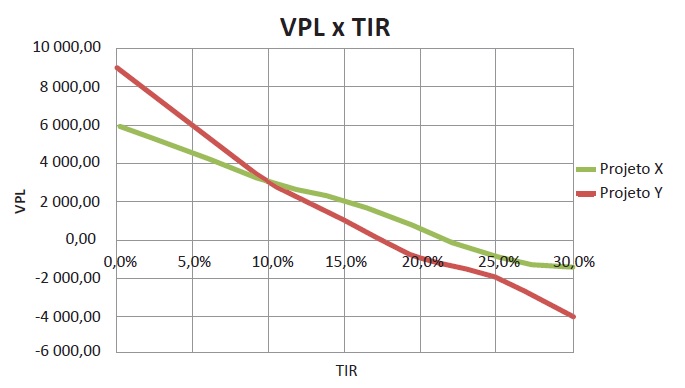
A partir das informações do texto e dos dados apresentados no gráfico, avalie as afirmações a seguir.
I. O payback ocorrerá simultaneamente nos projetos X e Y.
II. Para um custo de capital de 10%, os projetos X e Y gerarão a mesma riqueza.
III. O projeto X passará a ser melhor que o projeto Y quando a taxa de desconto for superior a 10%.
IV. O projeto X, quando comparado ao projeto Y, precisa de uma taxa de desconto menor para tornar-se inviável.
É correto o que se afirma em
DUZERT, Y.; SPINOLA, A.; BRANDÃO, A. Negociação. 3. ed. Rio de Janeiro: FGV, 2010 (adaptado).
Com base no conceito de negociação cooperativa e no relacionamento observado entre os setores de marketing e produção, avalie as afirmações a seguir.
I. Na prestação de serviços, o marketing precisa ser desenvolvido paralelamente com o sistema operacional que presta os serviços, ou seja, a entrega é acompanhada da produção, porque a avaliação que o cliente faz sobre a qualidade do serviço é baseada na forma pela qual ele percebe o sistema e na maneira como ele participa da produção do serviço que recebe.
II. A previsão de vendas a longo prazo e a previsão de vendas a curto prazo são necessárias, respectivamente, para o planejamento da capacidade produtiva e para o planejamento da produção, os quais, por sua vez, permitem o planejamento dos estoques e, consequentemente, um melhor atendimento ao cliente.
III. Quando uma empresa se encontra em um mercado com declínio de demanda, muitas vezes uma vasta linha de produtos é questão de sobrevivência na visão de marketing e muito provavelmente o gerente de marketing deve insistir nesse procedimento, o que acarreta aumento dos custos e perda de eficiência para a produção.
É correto o que se afirma em
FARIAS, A. P. S. et al. Gestão de conflitos: um estudo de caso numa organização do setor de vestuário. CONGRESSO NACIONAL DE EXCELÊNCIA EM GESTÃO, Anais [...] Pernambuco, 08 e 09 de agosto de 2014. Disponível em:http://www.inovarse.org/sites/. Acesso em: 15 jul. 2018 (adaptado).
Considerando que os conflitos entremeiamasrelações humanas, emumprocesso natural e imprescindível para o crescimento dos grupos, é papel do gestor
AMORIM, T. N. G. F. Responsabilidade social corporativa. In: ALBUQUERQUE, J. L. (org.) Gestão ambiental e responsabilidade social: conceitos, ferramentas e aplicações. São Paulo: Atlas, 2009 (adaptado).
Com base no texto, é correto afirmar que uma empresa cumpre seu papel social com êxito quando
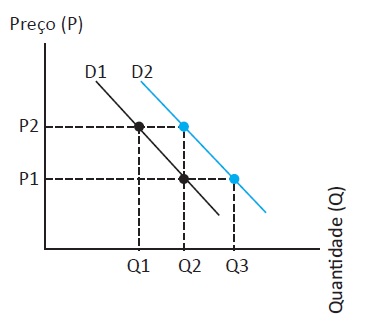
Considerando as curvas da demanda D1 e D2 no gráfico apresentado, avalie as asserções a seguir e a relação proposta entre elas.
I. O preço e a demanda de motocicletas sofreram alterações.
PORQUE
II. O aumento no preço dos combustíveis provocou um deslocamento da curva da demanda por motocicletas.
A respeito dessas asserções, assinale a opção correta.
LAUDON, K. C.; LAUDON, J. P. Sistemas de informação gerenciais: administrando a empresa digital. 9. ed. São Paulo: Pearson Prentice Hall, 2010 (adaptado).
Com base no texto apresentado, avalie as afirmações a seguir.
I. Os sistemas Enterprise Resource Planning (ERP), Planejamento dos Recursos Empresariais, são pacotes de softwares de gestão ou sistemas integrados, com recursos de automação e informatização, cujo objetivo é contribuir com o gerenciamento dos negócios empresariais.
II. Os sistemas Customer Relationship Management (CRM), Gerenciamento do Relacionamento com o Cliente, constituem uma abordagem que coloca o cliente como principal foco dos processos de negócio, com o intuito de perceber e antecipar suas necessidades e, então, atendê-lo da melhor forma.
III. Os sistemas Supply Chain Management (SCM), Gerenciamento da Cadeia de Suprimento, constituem o gerenciamento de uma rede interna de negócios envolvidos na provisão final de produtos e serviços da empresa, permitindo que a empresa tenha maior efetividade no controle de estoques.
IV. Os sistemas Business Inteligence (BI), Inteligência nos Negócios, referem-se a aplicações e tecnologias empregadas para coletar, disponibilizar e analisar dados e informações sobre as operações das empresas, permitindo que elas obtenham um conhecimento mais abrangente sobre métricas de vendas, produção e operações internas.
V. Os sistemas CRM, SCM e BI complementam os sistemas ERP; enquanto os sistemas ERP são voltados para os processos externos com fornecedores e clientes, os sistemas CRM, SCM e BI são voltados aos processos internos.
É correto apenas o que se afirma em
FERREIRA, M. F. et al. Ser empreendedor: pensar, criar e moldar a nova empresa. São Paulo: Saraiva, 2010 (adaptado).
A partir da leitura do texto, na fase de planejamento de um novo negócio, um empreendedor precisa identificar janelas de oportunidade com base em
Considerando a situação descrita, assinale a opção que apresenta corretamente a ferramenta que os irmãos devem implementar na empresa.
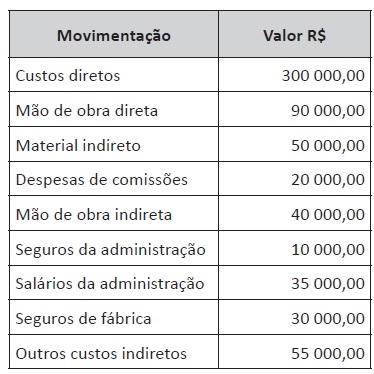
Durante esse mês, foram produzidas e vendidas 25 000 unidades de um determinado produto, cada uma pelo preço de R$ 45,00 líquidos de impostos.
Nesse caso, o valor em reais da margem de contribuição unitária é de
Diante disso, a gerente da área de atendimento marcou uma reunião com o gerente comercial e, depois de terminada, concluíram que
O fato é que, sem estabelecer e conhecer os objetivos e as definições estratégicas, é pouco provável que um projeto de gestão de processos consiga melhorar o desempenho dos processos e agregar algum tipo de valor à organização. É importante salientar que os processos passam constantemente por melhorias contínuas e, para garantir o sucesso dessas melhorias, uma das ferramentas que podem ser utilizadas pelas organizações é o ciclo PDCA.
ARAUJO, L. C. G. D.; GARCIA, A. A.; MARTINES, S. Gestão de processos: melhores resultados e excelência organizacional. 2. ed. São Paulo: Grupo GEN, 2016. Disponível em: https://integrada.minhabiblioteca.com.br. Acesso em: 13 jul. 2022 (adaptado).
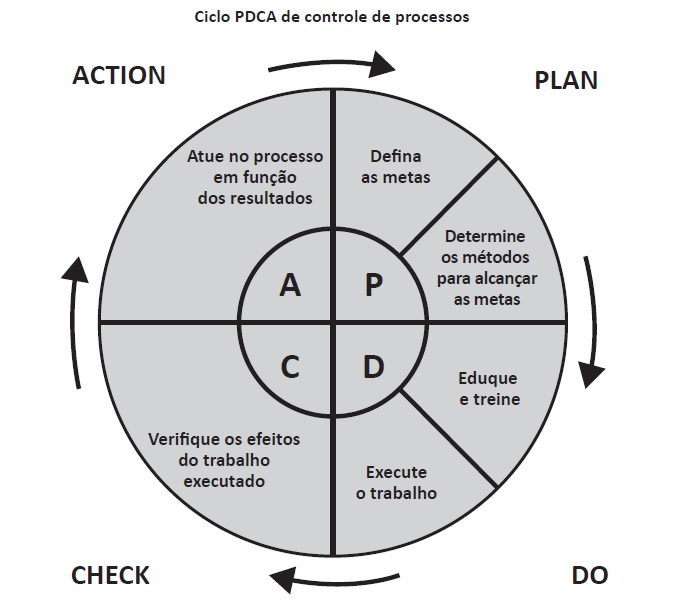
WERKEMA, C. Métodos PDCA e Demaic e suas ferramentas analíticas. São Paulo: Grupo GEN, 2012. Disponível em: https://integrada.minhabiblioteca.com.br. Acesso em: 13 jul. 2022 (adaptado).
A partir do exposto e sobre o uso do ciclo PDCA, seja para promoção de melhorias na estrutura organizacional, na gestão de processos ou mesmo na gestão estratégica das organizações, avalie as afirmações a seguir.
I. O ciclo PDCA é uma ferramenta de gestão que apresenta um caminho a ser seguido para o alcance das metas almejadas, servindo como um programa de gestão e monitoramento de ações determinadas.
II. De maneira contínua, a primeira etapa do ciclo PDCA consiste em planejar os cursos da gestão de uma empresa, isto é, estabelecer metas a serem alcançadas e, também, os meios para que a empresa as alcance.
III. Embora seja um processo cíclico, a última etapa do PDCA consiste em atuar a partir dos resultados obtidos, isto é, se a meta inicial foi alcançada, adota-se o plano como referência, caso contrário, atua-se sobre as causas que influenciaram o não alcance da meta.
É correto o que se afirma em